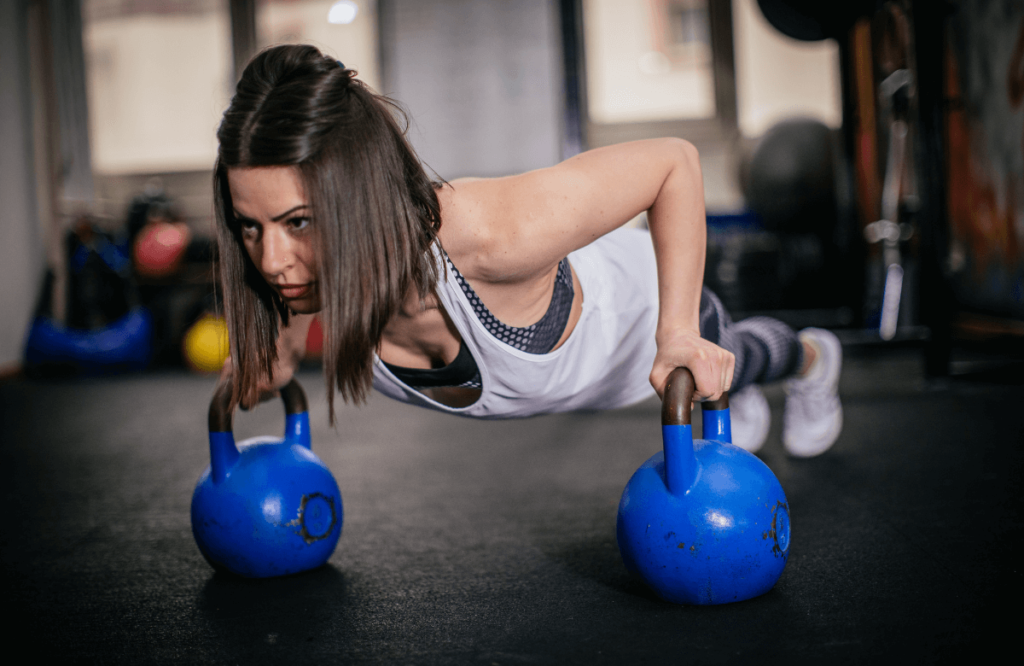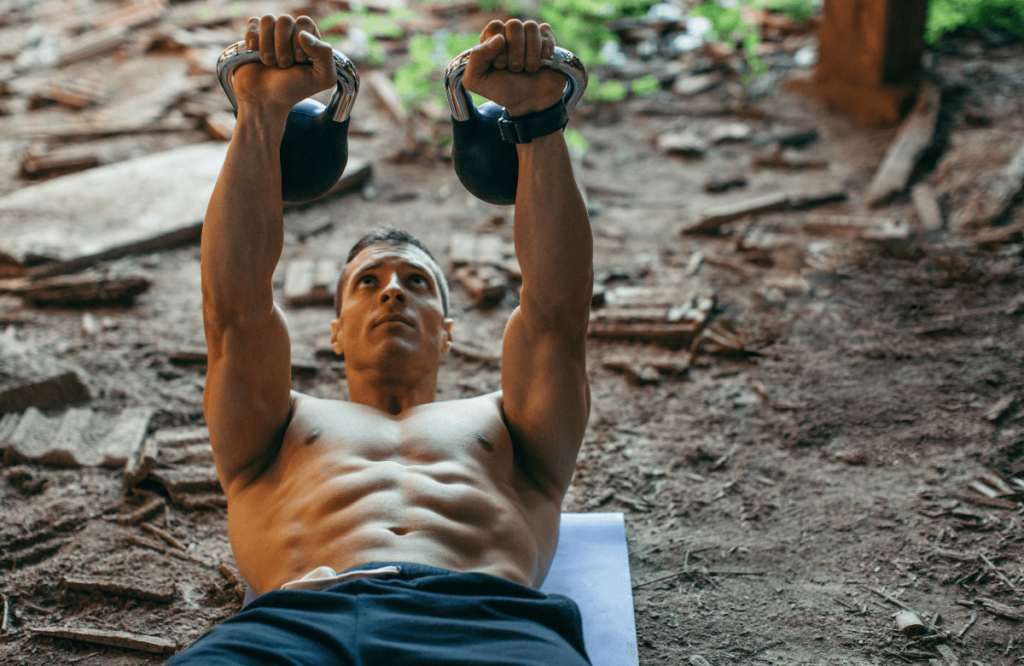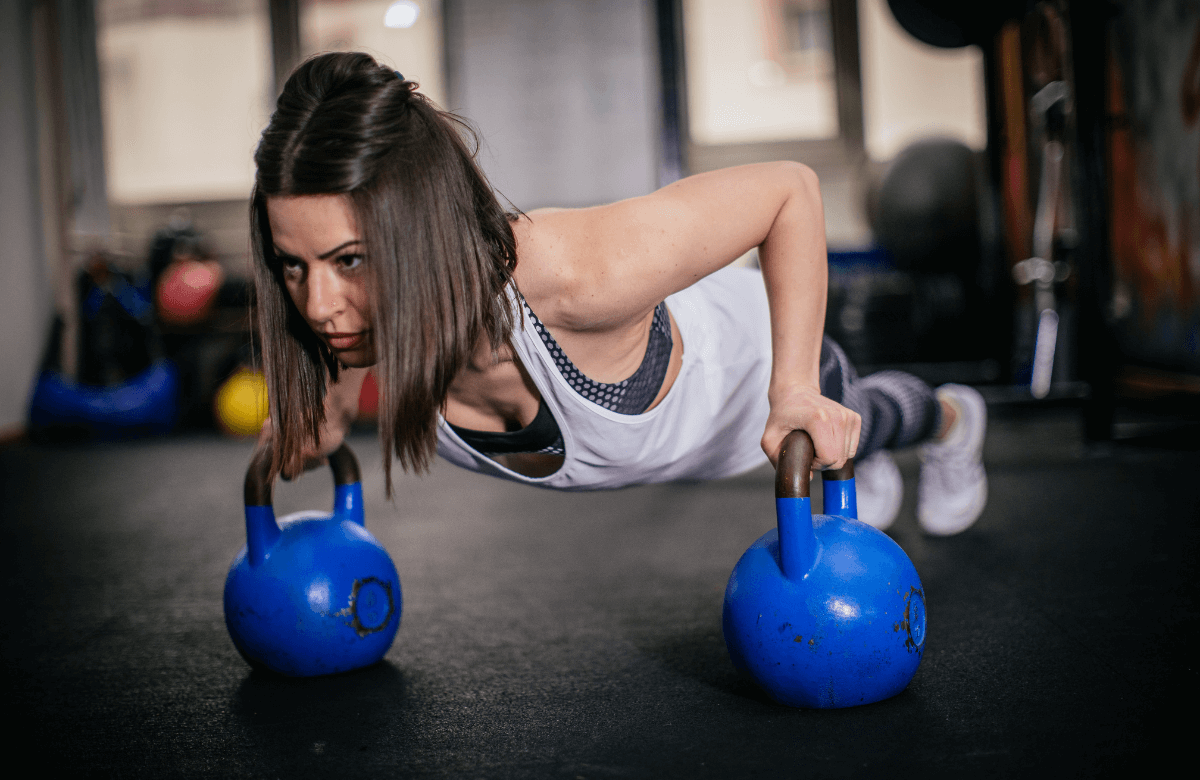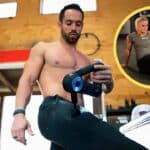Many people are under the idea that you can only bench press to build large chest muscles (specifically the pec major), but we’re here to tell you that’s not entirely the case. The kettlebell chest routines we are going to go into below are guaranteed to grow your upper body and increase muscular endurance without the need for any dumbbell exercises.
Jump to:
The Techniques And Terminology You Need To Know For Kettlebell Chest Exercises
The Perfect Reps
Know that if you are a beginner at working out that your form likely won’t be perfect at first, but in this article, we’ll go through the nitty-gritty of using kettlebells for building a stronger upper body.
The first thing to address is rep schemes. By altering the rep range and weight load, you should be able to work the body in different and new ways to hit your goals. Overall we recommend you work across the entire spectrum to ensure you become well-rounded in strength and endurance and to do that we advise you stay in these rep ranges:
- For power: 1-3 reps
- For strength: 4-6 reps
- For hypertrophy: 8-20 reps
- For endurance: 20+
Make sure for every rep that you should pick a weight that will challenge you, but not be too heavy that you will break form. For instance, if you’re focused on strength then you’ll want a weight load that’ll allow you to lift in the correct form for a minimum of 4 reps. Once your form is bad then you’ve gone to failure and likely need to decrease the weight to achieve the 4-6 reps.

Time Under Tension
If building muscle is your highest priority then time under tension is vital. All of your exercises should be between 8-20 reps (or 30-60 seconds per set) because if paired with a challenging, but ideal weight to keep form this should give you the proper time under tension required for hypertrophy.
Strength training is similar though it requires a heavier load to be effective and is only 4-6 reps at 4-20 seconds per set for that chest activation.
Progressive Overload
If building muscle and strength is really your goal, you need to place proper emphasis on your muscles than they are used to or you need to “overload” as many people call it.
A few ways to progressive overload are increasing the load, increasing the volume of your workout (more sets and similar exercises), increasing the reps/time under tension, increasing the intensity, and decreasing the rest time. You can also do more difficult exercises of a similar variation.
Even if you have “not enough time” or a limited amount of kettlebells you have, you can still apply progressive overload to your training. It’s just something you have to keep doing progressively over time or your training will fall stagnant and you’ll fail to see results. Consistency is the key here. Though, do make sure you’re taking rest days or a recovery period for around a week or so about every 8-12 weeks allowing you time to change up the routine and set newer and higher progressive overload goals. And to avoid burnout!
Building Strength vs. Muscle
If strength training is your main goal then focusing on increasing the weight during your chest presses little by little is a great way to progressive overload. However, if building muscle is a top priority then having a variety of exercises on all angles of your chest is even better than increasing weight slowly.
Another way to build strength and muscle is to focus on one at a time for 4-8 weeks and then do the other for 4-8 weeks, taking a break between each one and training like that throughout the year.
Also learning the proper form like when you should have your feet shoulder-width apart and how to get to your starting position, will get you huge muscle activation and increase in chest strength.

Now To The Best Part… The Top 7 Kettlebell Workouts To Build Bigger Pecs
Some of these exercises for chest development need a single kettlebell or double, if you don’t have access to two kettlebells then modifying the kettlebell movements so you’re only doing one hand at a time is an option . There are also a few kettlebell exercises that need a weight bench, but most can be substituted for the floor except for the incline bench. Otherwise, if you’re using an at-home gym with limited equipment most if not all of these kettlebell exercises are achievable.
Floor Press
For this Kettlebell chest exercise, lay on your back on the ground in a supine position placing each kettlebell beside you about six inches more than shoulder-width apart. By leaning to one side, grab your kettlebell with an underhand grip and turn back to the lying position with the bell resting on the outside of your forearm and palm facing your body.
This exercise can be done with either one hand or both, so if you have access to two kettlebells of the same weight then grab the other one and get it to the ready position. This should have your arms at a solid 45-degree angle with your shoulder blades pulled back and down. From your upper chest level press straight up, extending your arms. Once at the top position, very slowly lower the weights down until your elbow touches the floor. Repeat until your desired reps are hit.
Seesaw Press
Get yourself into the same starting position as done in the floor press exercise, using two weights and an underhand grip. Instead of lifting both weights at the same time, press your right up, squeezing at the top, and then while in the middle of slowly lowering that arm, press your left arm up using the same technique on the right. The seesaw movement is the kettlebells meeting in the middle as one goes up and the other goes down. During this kettlebell chest workout keep your shoulder blades engaged and down, focusing on breathing. If you find yourself failing to do proper form then lower the weight and start again.
Kettlebell Squeeze Press
To start this exercise, lie on your back in the supine position on either a flat bench or the floor. Pick a single kettlebell and hold it against your chest, wrapping your index finger and thumb around the body of the bell on both sides. Extend your arms, pressing the weight away from you while squeezing, and then lower back to your chest just to do it over again. Just ensure that the movement is controlled and slow and be careful to not let the kettlebell drop on you. If you’re losing grip or are falling out of form then switch to a lighter kettlebell.
Incline Kettlebell Press
Sit on a bench at an incline of 30 or 40 degrees with two kettlebells on your lap. Once in the ready position with the kettlebells in front of you at your chest, ground your feet and raise both the kettlebells overhead until your arms are fully extended. Keep your core tight and make sure your back is not arched. Remember to have your wrists straight with your palms facing forward towards the direction of your legs and when you slowly lower it back down the kettlebell touches your chest just slightly. Once you do, resume to your starting position.
Decline Floor Or Bench Press
Go back into a similar starting position as the floor press exercise by grabbing both kettlebells and resting them on your forearm, your arms at a 45-degree angle, and your shoulder blades pulled back and down. With your feet flat on the ground, raise your hips to position yourself into a glute bridge position.
Press your arms up as you did for the regular floor press except have the kettlebells over your lower chest level, not at the upper chest level. Very slowly lower the kettlebell weights back down until your elbows touch the floor, repeating until a full set is achieved. A similar exercise can be done on a decline bench or by putting your weight bench to the lowest setting, so your knees are higher than your chest. Just remember to use a considerable weight load and nothing too heavy and rest between sets to prevent injury.
Crush Grip Push Up
With your core tight, bring yourself into a plank position over a larger kettlebell, placing your hands on the bell with your fingers wrapping around the sides. This will be your crush’s grip. To do the workout complete a push-up from your ready position and repeat, going until failure.
The pushup itself should represent a close grip push-up or a diamond push up and if you’re wobbling or too much in the push-up position you might have to go to your knees or do a variation of the push-up like the diamond on the ground without a kettlebell. If you require a workout with more advanced movements, set your feet shoulder-width apart or wider. This one is a favorite to add to the end of a workout.
Kettlebell Pullover
To get deeper into your kettlebell training, go back into a supine position and bring the kettlebell onto your chest. Hold it upside down so the top of the handle is facing your body. In your ready position, press the kettlebell straight up with the bottom of the bell facing the ceiling. With your arms extended, bend at your elbow while slowly lowering your kettlebell down (remember to keep your arms fully extended the entire time). Once the kettlebell touches the ground, bring it directly over your chest so your arms are perpendicular to your body. All while keeping your core tight and focusing on your breathing.
Why Should You Train Your Chest With Kettlebells?
There are so many benefits to kettlebell training like muscle mass, increased heart rate for better cardiovascular health, and a fun and new way to do cardio workouts and get rid of excess body fat. And let’s be honest, dumbbell chest exercises can be a little boring sometimes, so adding in even a single kettlebell can add a lot to spice up your workout routine.
An additional benefit is that since the kettlebell can be held in a different position and is typically easier to move around, there is an increase in the range of motion which can be very helpful when looking for muscle-building exercises.
Do Kettlebell Swings Also Work Your Chest Muscles?
We have an entire article on kettlebell swings and as much as we love their glute-burning abilities, they’re not the absolute best chest exercises that you can do for building your pectoral muscles in comparison to when you bench with kettlebells. However, with the conventional Russian kettlebell swings, you’ll be able to activate the upper chest and shoulders.
And with the American kettlebell swing you’ll work things like your pectoralis major and anterior deltoids, which is great, but if you’re looking for a workout that solely focuses on your chest muscles then the kettlebell swing likely isn’t your first pick. Although if you are looking to improve anything on your upper chest level, then American kettlebell swings are a fantastic choice!














